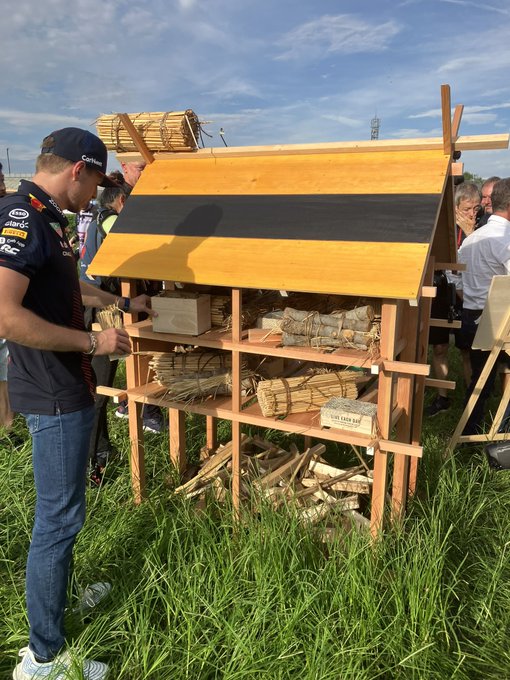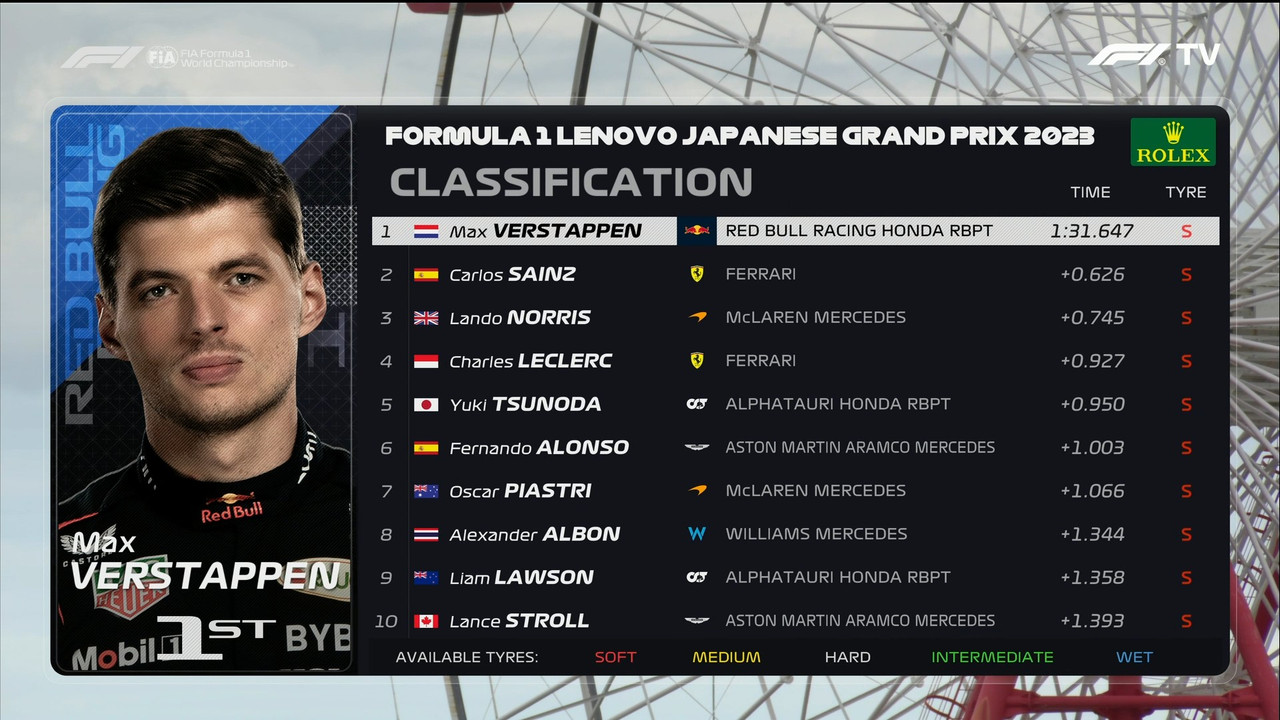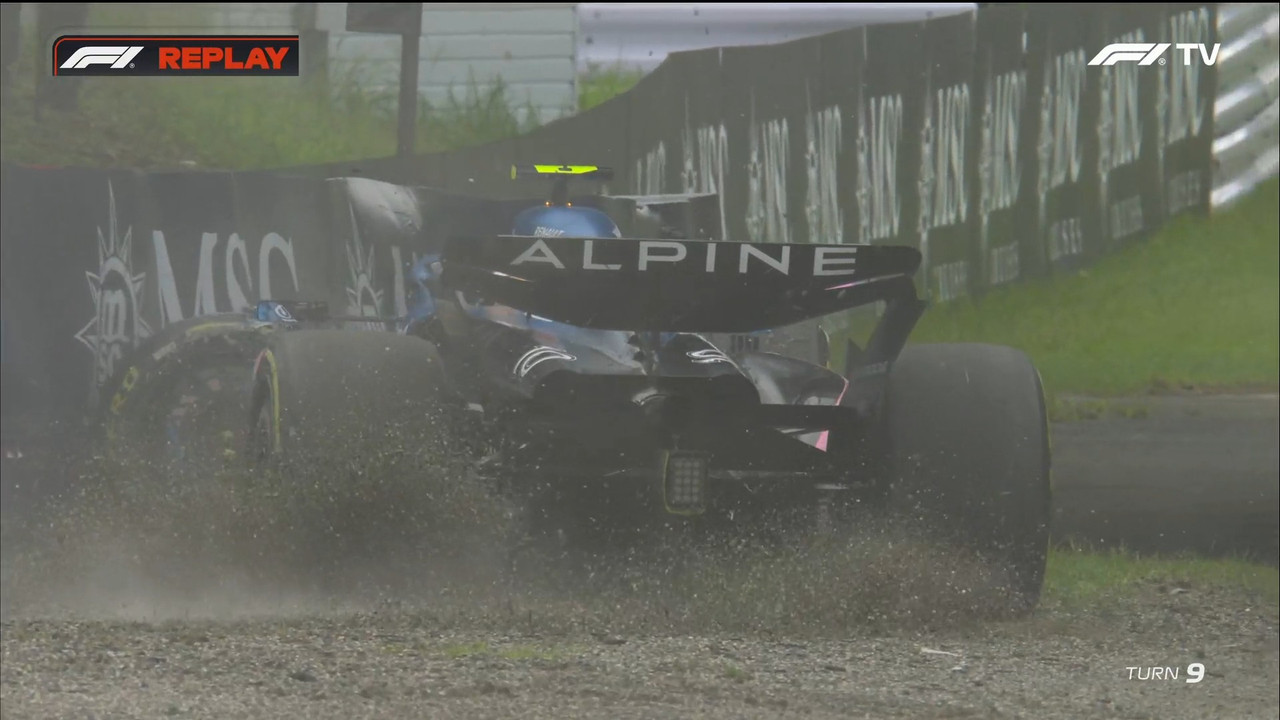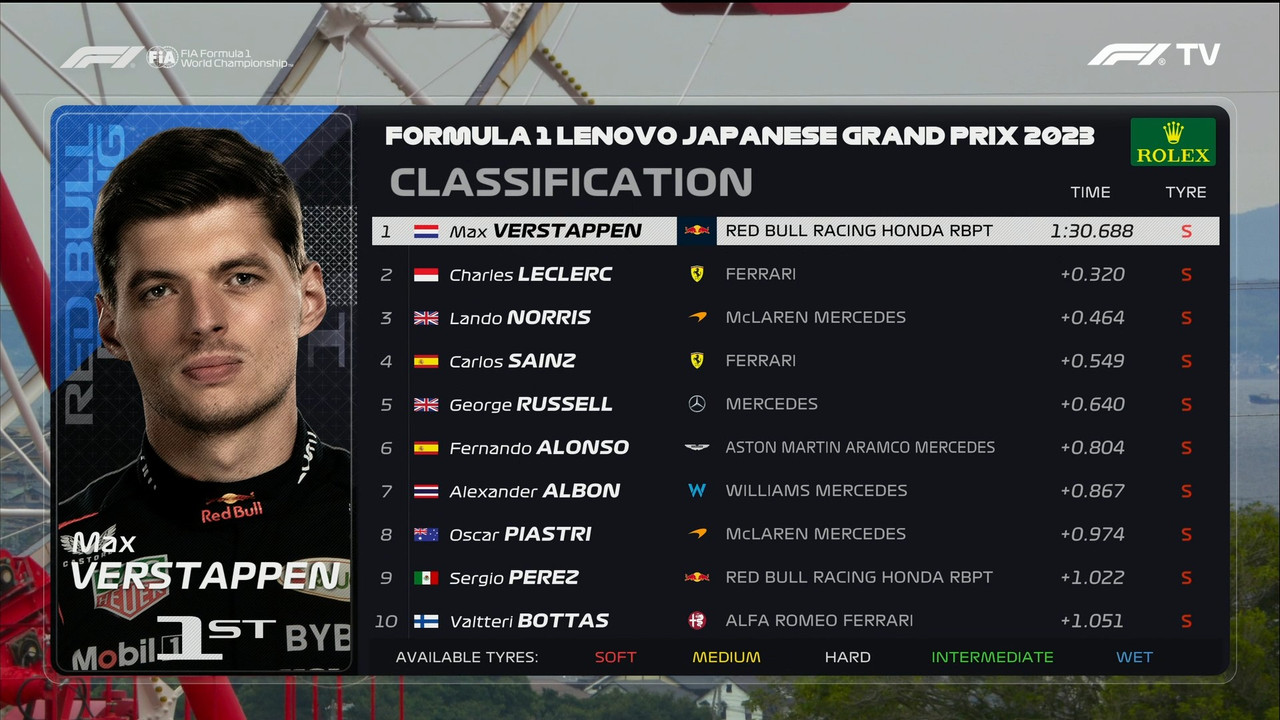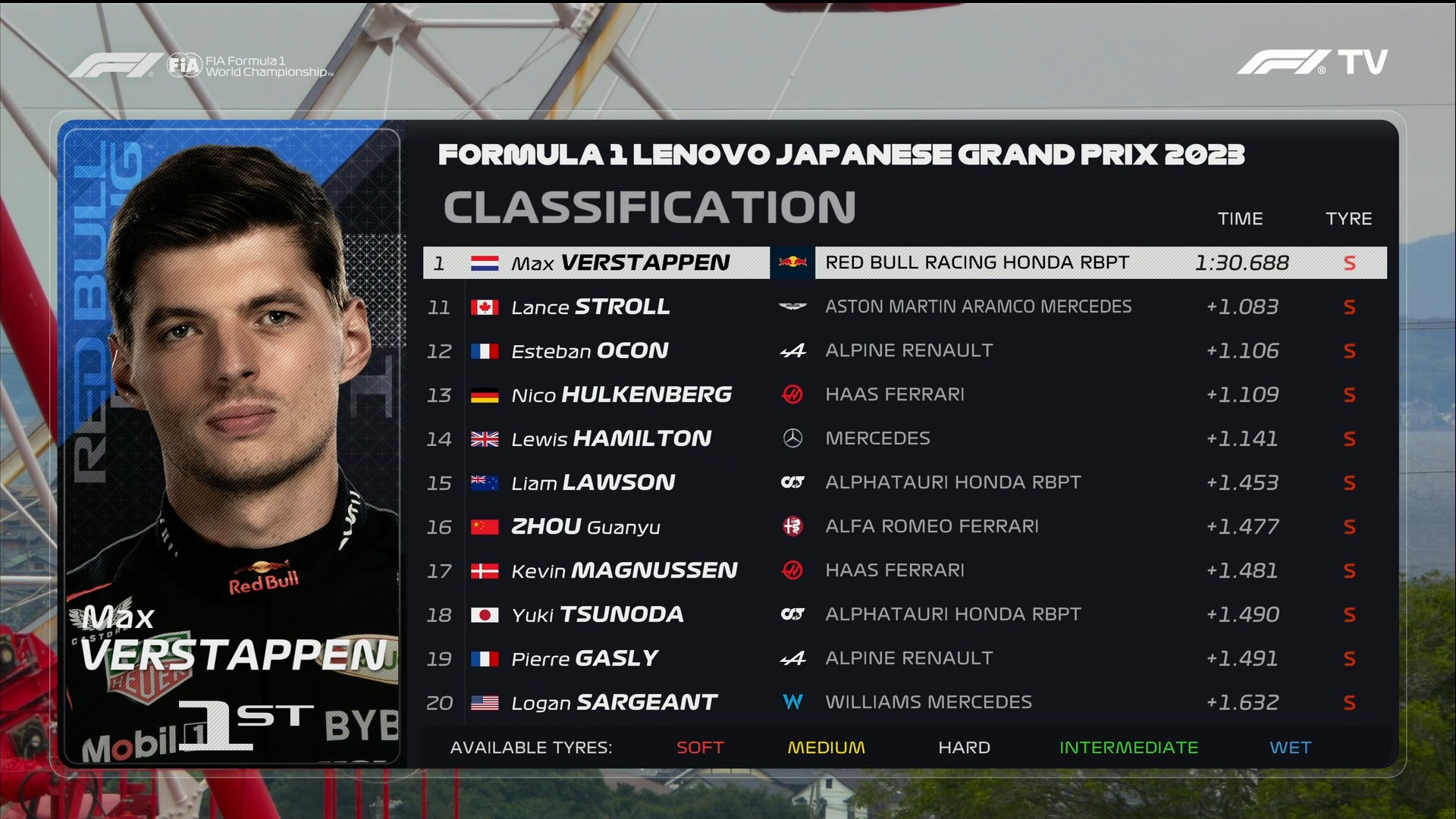dinostar77
Full Member
- Joined
- Feb 6, 2014
- Messages
- 7,654
Advanced apologies for the long post, however its a interesting read.
Driving styles of the 2019 F1 grid - an analysis
This is an excerpt from a book written by Gábor Wéber in 2019 called “Formula 1 in the 21st Century” (original title: Forma-1 a 21. században). Wéber is currently the main live F1 commentator in the Hungarian broadcast, he started commentating in 2002 and was the “expert commentator” (the equivalent to Martin Brundle, I don't know how to call it) for a long time before taking over main commentating duties in 2019. He raced touring cars professionally until 2014, his biggest achievement is winning the SEAT León Eurocup in 2010. He was an important figure in Hungarian sim-racing since the early days, for example by writing handbooks for car setups for various games since the early 2000’s and was an inspiration and mentor for Norbert Michelisz, 2019 World Touring Car Champion (who also came from a sim-racing background).
In his 2019 book, he writes about many technical aspects of Formula 1, from race car designs and philosophies, about finances in F1 to driving styles of the 2019 grid. Unfortunately, most people wouldn’t understand the book because it is written in Hungarian, but I tried to translate this very interesting and informative part. I highly recommend the book to any Hungarian speaking F1 fan and hope for the others, that it gets translated to English. Now on to the breakdown, starting from the back of the grid (the **highlights** and things in \[\] are my edits):
**Williams**
Every driver on the current grid has his own individual marks on his driving, but some couldn’t show their best side for various reasons. Most of the time, it was **Robert Kubica** who was at the back of the queue, he was only a shadow of his former self since his crash, and whatever they said about his injury, it has very much influenced his driving. His rocky handling of the steering wheel and his unsteady corner entries took away time from him especially in long corners, but he also lost considerably to his teammate under braking. He didn’t feel too well in the car and to be fair, it would have been a miracle, if we had seen the old Kubica on the track this year. **George Russell** on the other hand starred, he rose above the Pole in every aspect and could flash his skills in the Williams. With this hard-to-drive car, he managed to drive especially cleanly, precisely, with minimal corrections, he usually took the corners with one single movement of the steering wheel, while also not screwing around at braking and corner entry. It’s surprising, but based on his driving and accuracy, he is up there with the best and it’s no accident that he beat Kubica by that big of a margin.
**Haas**
The two Haas drivers are an enigma in regards of driving technique, because the only stability in it was their inconsistency, which of course has a lot to do with the car. **Kevin Magnussen** likes to start his corners early and absorbs his high entry speed with a lengthy “sailing” mid-corner phase, quasi deliberately generating understeer, but his lines are scattered and imprecise. This is no doubt the fault of the car, but with better adaptivity, one could have made more of this construction. **Romain Grosjean** is an even bigger enigma, because of the pair, he is more inspired at the wheel, but is at the same time very sensitive. He is among the hardest and latest braking drivers on the grid, but he does that while having very light downshifts, he balances the car beautifully with the brakes in mid-speed corner entries and because of that dares and is able to brake deep into the corner. As Magnussen is the type who approaches the corner with slightly too much speed and searches the limit from above, Grosjean can string together the brake-throttle transition masterfully and nearly invisibly, hurting the car less. It’s a shame that his talents are paired with such a sensitive driver’s soul, while one could even chop wood on the back of his Danish teammate.
**Alfa Romeo**
At Alfa, the team is clearly built around **Kimi Räikkönen**, who still turns in early with massive speed, but couldn’t do this effectively, if he wasn’t pinpoint accurate while hitting the apexes. Kimi’s throttle control is very refined, and he likes to balance the car with the throttle in long corners. \[**Antonio**\] **Giovinazzi** resembles him in the way, that his style is also light and unforced, and he likes to send his car deep into the corner. The Italian struggles more with finding the right rotation and it is obvious that he hasn’t got the right confidence yet, the reason for that could be that he tries to adapt to Räikkönen’s style, but it will not be completely his own. On top of that, in long corners he strangely rests his helmet on the outer side of his headrest, which raises fitness concerns – maybe it’s no coincidence that he is more prone to errors at the end of the races.
**Toro Rosso** \[now called Alpha Tauri\]
**Daniil Kvyat** confidently sends his Toro Rosso with huge speed into the corners, heavily using the engine braking, his last downshifts are especially brutal. He plays the role of the composed but reactive driver perfectly, but he trusts on the grip of the front axle to such an extent, that the slightest slip up can ruin his exit and his chances for a good lap time. His teammate who was demoted during the year, **Pierre Gasly** practices the craft of spurring the car even more masterfully, with deadly downshifts, then as soon as the rotation starts, he releases the brakes, nearly forcing the car into a drift. His style differs from that of Kvyat in that he can transfer the weight of the car faster and doesn’t need the grip of the front that much, but because of that, he can lose stability more quickly – as seen often during his Red Bull stint.
**Racing Point**
**Sergio Perez** is the perfect contrast to this \[Gasly\], a very anticipating driver with nearly classic lines, turning in slightly earlier than those. He’s the one who rather brakes early to have the perfect exit. He purposely drives a square line in slow corners but gains back the lost time in the following straight with a better exit. His technique is perfect for limiting tire wear and it’s what allows him to be one of the tire conserving specialists on the grid. On the other side of the Racing Point garage, we find the perfect opposite to Perez on the driver style spectrum, because **Lance Stroll** is the big improviser on the grid. A true reactive driver, who rides the horse bareback, he operates with very deep braking and carries much speed into the corner because of this. He constantly dances on the limit with the wheel and the pedals. From the outside, it seems like he only plans up to the middle of the corner and somehow fights his way from there to the straight, but his reaction time is incredible. This unrestful style is what limits his qualifying results, but it helps him during the races, because he reacts very well to unforeseen events and changing conditions, we rarely see him making mistakes then.
**Renault**
The Renault drivers approach driving with much more maturity, both driving very precise, geometric lines through corners. **Nico Hülkenberg** is the more graceful of the pair, who like Perez searches for the better exit, rather than braking too hard, rotating the car very well at the late corner entries. He was also born with a throttle patting right foot. Everybody remembers **Daniel Ricciardo** from his late, diving braking manoeuvres, but when he’s on his own, the most special thing is the accuracy with which he is able to do the important weight transfers. This requires a very healthy relationship with the brake pedal, but not in the sense of pressing it to the metal, rather the great feeling and rhythm of releasing it.
**McLaren**
The McLaren drivers differ quite a bit, **Carlos Sainz** is always searching for tiny corrections, he loves when the car lives underneath him. His downshifts are brutal, he moves the steering wheel very determined, uses engine braking much while turning in quite late to catch a late apex. **Lando Norris** on the other hand has a very elegant style, balancing sensibly at the corner entry and while he brakes very late into the corner, we rarely see a big smoke from lockups. It’s like he would want to invisibly trick physics, even his machine gun-like downshifts are much more rhythmic as opposed to other drivers.
**Red Bull**
It is beyond question, that one of the best performing drivers of the past years has been **Max Verstappen** and the Dutchman at Red Bull is now attacking the top of the sport, after developing much in short time. His driving technique is more akin to a precise 12-hour operation conducted by a brain surgeon according to a thought-out plan, than to the hot-headed behaviour of a young man in his twenties. The biggest trick of Verstappen’s speed is that he steers for a minimal amount of time and as the car starts to rotate, he controls it with the pedals, this is also an important aspect of his good tire management. His other even by F1 standards outstanding virtue is the precision of his “inner clock”, which leads to him arriving at every corner at the same exact point and in the exact way as he planned to do. He does this at every stage of the race regardless of speed or tire life. It’s no surprise that his teammates have a hard time and after the summer break, **Alexander Albon** has inherited this unthankful job. The British-Thai dual citizen’s style is actually the nearest to that of Verstappen, which could too justify the driver change before Spa. Albon’s biggest virtue is his calm, rhythmic driving, he doesn’t provoke the car and lets it work under him. He handles the RB15 with sensitive throttle control, without any hot-headedness and his accuracy puts him also into the better half of the field.
**Ferrari**
To be a Ferrari driver is the dream of most young drivers, but most of the time, proven drivers and champions get the seat. This changed this year with the arrival of **Charles Leclerc**, whose driving qualities are undoubted, and the traits of this year’s Ferrari helped him too with evolving into the team leader. The style of the Monegasque actually reminds of the early days Alonso, regarding his steering wheel movement and braking pressure at the corner entries. Leclerc carries some understeer into the balancing phase of the corner and rotates the car at a lower speed, this reduces the sensitivity of the rear of the SF90 which can appear under some circumstances. Another characteristic of his driving is that he hits late and flat apexes and prefers to short shift out of corners. The reason why he had some problems with tire management despite his short shifting is that he still is a reactive driver unlike Perez or Hülkenberg, sometimes “in the heat of the battle” he still is too hard in the throttle. Opposed to that, his teammate **Sebastian Vettel** knows everything about driving being a four-time champion, but this year he arrived at a dead end. His speed didn’t vanish, but his confidence was nearly wiped out completely, which generated more incomprehensible mistakes. The style of the German is based – as is the case with many drivers on the grid – on a high entry speed and on finding the balance with the brakes. This generates together with an early turn-in and early downshifts a rotation which the rear axle has to be able to counter. He used this masterfully during his Red Bull stint, especially with the blown diffuser. This year he was not bothered by this in low-speed or long corners, because his V-shaped lines helped him with this effect, but he remained vulnerable in short, mid-speed corners. This is because this year’s Ferrari was very sensitive at the rear at a certain ride height and angle, and the momentary loss of grip came at the worst times for Vettel. Despite this he seemingly didn’t change or couldn’t change and therefore ended his Ferrari career. What will happen with his F1 career...?
**Mercedes**
With six titles, 87 pole positions and 83 wins, **Lewis Hamilton** has been elevated to the all-time greats and is even in reaching range of the records of Michael Schumacher. Regarding his technique, he likes to brake late, sometimes even locking up his inner front tires, but he can’t be pigeonholed according to his lines. He likes to vary the late, early or normal entry lines, sometimes even on the same lap, according to the behaviour of his car, he’s a bit like a one-man band. His adaptability is one of his strongest weapons, but this wouldn’t help him without his outstanding precision, in this regard he and Verstappen are above the current field. Another trademark of his driving is his ability to transfer load very rapidly, which helps him especially on circuits with many chicanes. **Valtteri Bottas**’ style slightly differs from his teammate; he turns in quite early really throwing his car into the corner but as a master of the mid-corner he somehow always manages to hit the required minimal speed. Basically, as long as his front grips, he is crazy fast. His style is surprisingly aggressive, he likes when the back moves around and he has to correct it. Sometimes he can overdo it, his throttle control is also quite robotic, and the weight transfers are not that efficient as his teammates’.
The driving style of drivers is made of many small, sometimes hardly visible things. A big part of those come naturally and are unique, like a fingerprint or the rhythm of our breathing. Other parts can be learned and improved, and the best drivers never stop learning new things.
Source: Gábor Wéber (2019): Forma-1 a 21. században, p. 101-106
Driving styles of the 2019 F1 grid - an analysis
This is an excerpt from a book written by Gábor Wéber in 2019 called “Formula 1 in the 21st Century” (original title: Forma-1 a 21. században). Wéber is currently the main live F1 commentator in the Hungarian broadcast, he started commentating in 2002 and was the “expert commentator” (the equivalent to Martin Brundle, I don't know how to call it) for a long time before taking over main commentating duties in 2019. He raced touring cars professionally until 2014, his biggest achievement is winning the SEAT León Eurocup in 2010. He was an important figure in Hungarian sim-racing since the early days, for example by writing handbooks for car setups for various games since the early 2000’s and was an inspiration and mentor for Norbert Michelisz, 2019 World Touring Car Champion (who also came from a sim-racing background).
In his 2019 book, he writes about many technical aspects of Formula 1, from race car designs and philosophies, about finances in F1 to driving styles of the 2019 grid. Unfortunately, most people wouldn’t understand the book because it is written in Hungarian, but I tried to translate this very interesting and informative part. I highly recommend the book to any Hungarian speaking F1 fan and hope for the others, that it gets translated to English. Now on to the breakdown, starting from the back of the grid (the **highlights** and things in \[\] are my edits):
**Williams**
Every driver on the current grid has his own individual marks on his driving, but some couldn’t show their best side for various reasons. Most of the time, it was **Robert Kubica** who was at the back of the queue, he was only a shadow of his former self since his crash, and whatever they said about his injury, it has very much influenced his driving. His rocky handling of the steering wheel and his unsteady corner entries took away time from him especially in long corners, but he also lost considerably to his teammate under braking. He didn’t feel too well in the car and to be fair, it would have been a miracle, if we had seen the old Kubica on the track this year. **George Russell** on the other hand starred, he rose above the Pole in every aspect and could flash his skills in the Williams. With this hard-to-drive car, he managed to drive especially cleanly, precisely, with minimal corrections, he usually took the corners with one single movement of the steering wheel, while also not screwing around at braking and corner entry. It’s surprising, but based on his driving and accuracy, he is up there with the best and it’s no accident that he beat Kubica by that big of a margin.
**Haas**
The two Haas drivers are an enigma in regards of driving technique, because the only stability in it was their inconsistency, which of course has a lot to do with the car. **Kevin Magnussen** likes to start his corners early and absorbs his high entry speed with a lengthy “sailing” mid-corner phase, quasi deliberately generating understeer, but his lines are scattered and imprecise. This is no doubt the fault of the car, but with better adaptivity, one could have made more of this construction. **Romain Grosjean** is an even bigger enigma, because of the pair, he is more inspired at the wheel, but is at the same time very sensitive. He is among the hardest and latest braking drivers on the grid, but he does that while having very light downshifts, he balances the car beautifully with the brakes in mid-speed corner entries and because of that dares and is able to brake deep into the corner. As Magnussen is the type who approaches the corner with slightly too much speed and searches the limit from above, Grosjean can string together the brake-throttle transition masterfully and nearly invisibly, hurting the car less. It’s a shame that his talents are paired with such a sensitive driver’s soul, while one could even chop wood on the back of his Danish teammate.
**Alfa Romeo**
At Alfa, the team is clearly built around **Kimi Räikkönen**, who still turns in early with massive speed, but couldn’t do this effectively, if he wasn’t pinpoint accurate while hitting the apexes. Kimi’s throttle control is very refined, and he likes to balance the car with the throttle in long corners. \[**Antonio**\] **Giovinazzi** resembles him in the way, that his style is also light and unforced, and he likes to send his car deep into the corner. The Italian struggles more with finding the right rotation and it is obvious that he hasn’t got the right confidence yet, the reason for that could be that he tries to adapt to Räikkönen’s style, but it will not be completely his own. On top of that, in long corners he strangely rests his helmet on the outer side of his headrest, which raises fitness concerns – maybe it’s no coincidence that he is more prone to errors at the end of the races.
**Toro Rosso** \[now called Alpha Tauri\]
**Daniil Kvyat** confidently sends his Toro Rosso with huge speed into the corners, heavily using the engine braking, his last downshifts are especially brutal. He plays the role of the composed but reactive driver perfectly, but he trusts on the grip of the front axle to such an extent, that the slightest slip up can ruin his exit and his chances for a good lap time. His teammate who was demoted during the year, **Pierre Gasly** practices the craft of spurring the car even more masterfully, with deadly downshifts, then as soon as the rotation starts, he releases the brakes, nearly forcing the car into a drift. His style differs from that of Kvyat in that he can transfer the weight of the car faster and doesn’t need the grip of the front that much, but because of that, he can lose stability more quickly – as seen often during his Red Bull stint.
**Racing Point**
**Sergio Perez** is the perfect contrast to this \[Gasly\], a very anticipating driver with nearly classic lines, turning in slightly earlier than those. He’s the one who rather brakes early to have the perfect exit. He purposely drives a square line in slow corners but gains back the lost time in the following straight with a better exit. His technique is perfect for limiting tire wear and it’s what allows him to be one of the tire conserving specialists on the grid. On the other side of the Racing Point garage, we find the perfect opposite to Perez on the driver style spectrum, because **Lance Stroll** is the big improviser on the grid. A true reactive driver, who rides the horse bareback, he operates with very deep braking and carries much speed into the corner because of this. He constantly dances on the limit with the wheel and the pedals. From the outside, it seems like he only plans up to the middle of the corner and somehow fights his way from there to the straight, but his reaction time is incredible. This unrestful style is what limits his qualifying results, but it helps him during the races, because he reacts very well to unforeseen events and changing conditions, we rarely see him making mistakes then.
**Renault**
The Renault drivers approach driving with much more maturity, both driving very precise, geometric lines through corners. **Nico Hülkenberg** is the more graceful of the pair, who like Perez searches for the better exit, rather than braking too hard, rotating the car very well at the late corner entries. He was also born with a throttle patting right foot. Everybody remembers **Daniel Ricciardo** from his late, diving braking manoeuvres, but when he’s on his own, the most special thing is the accuracy with which he is able to do the important weight transfers. This requires a very healthy relationship with the brake pedal, but not in the sense of pressing it to the metal, rather the great feeling and rhythm of releasing it.
**McLaren**
The McLaren drivers differ quite a bit, **Carlos Sainz** is always searching for tiny corrections, he loves when the car lives underneath him. His downshifts are brutal, he moves the steering wheel very determined, uses engine braking much while turning in quite late to catch a late apex. **Lando Norris** on the other hand has a very elegant style, balancing sensibly at the corner entry and while he brakes very late into the corner, we rarely see a big smoke from lockups. It’s like he would want to invisibly trick physics, even his machine gun-like downshifts are much more rhythmic as opposed to other drivers.
**Red Bull**
It is beyond question, that one of the best performing drivers of the past years has been **Max Verstappen** and the Dutchman at Red Bull is now attacking the top of the sport, after developing much in short time. His driving technique is more akin to a precise 12-hour operation conducted by a brain surgeon according to a thought-out plan, than to the hot-headed behaviour of a young man in his twenties. The biggest trick of Verstappen’s speed is that he steers for a minimal amount of time and as the car starts to rotate, he controls it with the pedals, this is also an important aspect of his good tire management. His other even by F1 standards outstanding virtue is the precision of his “inner clock”, which leads to him arriving at every corner at the same exact point and in the exact way as he planned to do. He does this at every stage of the race regardless of speed or tire life. It’s no surprise that his teammates have a hard time and after the summer break, **Alexander Albon** has inherited this unthankful job. The British-Thai dual citizen’s style is actually the nearest to that of Verstappen, which could too justify the driver change before Spa. Albon’s biggest virtue is his calm, rhythmic driving, he doesn’t provoke the car and lets it work under him. He handles the RB15 with sensitive throttle control, without any hot-headedness and his accuracy puts him also into the better half of the field.
**Ferrari**
To be a Ferrari driver is the dream of most young drivers, but most of the time, proven drivers and champions get the seat. This changed this year with the arrival of **Charles Leclerc**, whose driving qualities are undoubted, and the traits of this year’s Ferrari helped him too with evolving into the team leader. The style of the Monegasque actually reminds of the early days Alonso, regarding his steering wheel movement and braking pressure at the corner entries. Leclerc carries some understeer into the balancing phase of the corner and rotates the car at a lower speed, this reduces the sensitivity of the rear of the SF90 which can appear under some circumstances. Another characteristic of his driving is that he hits late and flat apexes and prefers to short shift out of corners. The reason why he had some problems with tire management despite his short shifting is that he still is a reactive driver unlike Perez or Hülkenberg, sometimes “in the heat of the battle” he still is too hard in the throttle. Opposed to that, his teammate **Sebastian Vettel** knows everything about driving being a four-time champion, but this year he arrived at a dead end. His speed didn’t vanish, but his confidence was nearly wiped out completely, which generated more incomprehensible mistakes. The style of the German is based – as is the case with many drivers on the grid – on a high entry speed and on finding the balance with the brakes. This generates together with an early turn-in and early downshifts a rotation which the rear axle has to be able to counter. He used this masterfully during his Red Bull stint, especially with the blown diffuser. This year he was not bothered by this in low-speed or long corners, because his V-shaped lines helped him with this effect, but he remained vulnerable in short, mid-speed corners. This is because this year’s Ferrari was very sensitive at the rear at a certain ride height and angle, and the momentary loss of grip came at the worst times for Vettel. Despite this he seemingly didn’t change or couldn’t change and therefore ended his Ferrari career. What will happen with his F1 career...?
**Mercedes**
With six titles, 87 pole positions and 83 wins, **Lewis Hamilton** has been elevated to the all-time greats and is even in reaching range of the records of Michael Schumacher. Regarding his technique, he likes to brake late, sometimes even locking up his inner front tires, but he can’t be pigeonholed according to his lines. He likes to vary the late, early or normal entry lines, sometimes even on the same lap, according to the behaviour of his car, he’s a bit like a one-man band. His adaptability is one of his strongest weapons, but this wouldn’t help him without his outstanding precision, in this regard he and Verstappen are above the current field. Another trademark of his driving is his ability to transfer load very rapidly, which helps him especially on circuits with many chicanes. **Valtteri Bottas**’ style slightly differs from his teammate; he turns in quite early really throwing his car into the corner but as a master of the mid-corner he somehow always manages to hit the required minimal speed. Basically, as long as his front grips, he is crazy fast. His style is surprisingly aggressive, he likes when the back moves around and he has to correct it. Sometimes he can overdo it, his throttle control is also quite robotic, and the weight transfers are not that efficient as his teammates’.
The driving style of drivers is made of many small, sometimes hardly visible things. A big part of those come naturally and are unique, like a fingerprint or the rhythm of our breathing. Other parts can be learned and improved, and the best drivers never stop learning new things.
Source: Gábor Wéber (2019): Forma-1 a 21. században, p. 101-106




